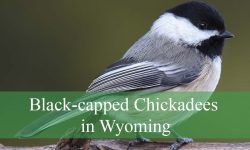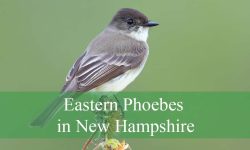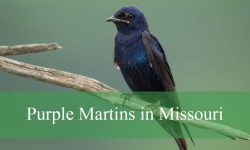White crowned sparrows are some of the most distinctive migratory songbirds found across New Mexico, arriving with crisp black and white head stripes and a calm, steady presence. Their whistles drift through canyons, desert scrub, and suburban neighborhoods, adding soft musical tones to the state’s winter soundscape. Though they appear modest, these sparrows reveal a complex mix of behaviors that often go unnoticed by casual observers.
New Mexico’s combination of mild winters, diverse habitats, and reliable food sources provides an ideal landscape for these migratory sparrows. From the high desert to mountain foothills and riparian corridors, white crowned sparrows use New Mexico as a crucial stopover and wintering ground. Their presence marks important seasonal transitions, especially as flocks arrive from northern breeding zones each fall.
This article explores hidden facts about white crowned sparrows in New Mexico, revealing their migration patterns, feeding habits, social dynamics, and survival strategies that make them far more fascinating than their quiet appearance suggests.
Understanding White-Crowned Sparrows in New Mexico

What White-Crowned Sparrows Really Are
White crowned sparrows are medium sized sparrows recognized by bold head stripes, gray faces, and subtle brown wings. Their clean facial pattern makes them easy to identify even at a distance. They belong to a complex species group with multiple regional forms, each with unique song patterns and migration routes. Their behavior reflects adaptability and careful resource use, especially during harsh winter months.
Unlike many sparrows, white crowned sparrows rely heavily on vocal signals to maintain flock cohesion. Their songs vary widely across different populations, suggesting strong cultural learning in addition to instinct. In New Mexico, flocks often consist of individuals from multiple northern regions, creating a blend of vocal dialects across wintering grounds.
Why New Mexico Is Ideal for Them
New Mexico provides abundant winter food and mild conditions compared to the northern regions these sparrows migrate from. Desert shrubs, grasslands, and riparian areas supply seeds that persist through winter. Agricultural fields and suburban yards also create feeding pockets that support flocks during cold months.
The state’s elevational diversity—from high mountains to grassland valleys—allows sparrows to shift position during harsh weather. When cold fronts arrive, birds descend to lower elevations where temperatures remain warmer and food remains accessible. This habitat flexibility plays a critical role in their seasonal survival.
Where They Occur Across the State
White crowned sparrows appear widely across New Mexico during migration and winter. They frequent foothills, desert scrublands, riparian corridors such as the Rio Grande Valley, and urban parks. Suburban neighborhoods with shrubs, seed-bearing grasses, and feeders often host reliable winter flocks. In northern and central New Mexico, they remain common visitors throughout the nonbreeding season.
Hidden Behaviors You Might Never Notice
Their Flocking Behavior Is Carefully Structured
During winter, white crowned sparrows feed in loose flocks that rely heavily on visual and vocal communication. Dominance hierarchies form within each flock, influencing access to food, shelter, and perch positions. Birds with bolder head stripes often hold higher ranks, suggesting a visual component to social organization. These subtle displays guide flock behavior quietly and efficiently.
They Memorize Feeding Sites With Precision
White crowned sparrows develop strong spatial memory while wintering in New Mexico. They remember safe foraging areas, reliable seed sources, and protected roosting spots. This memory allows them to move confidently through familiar landscapes, especially in winter when energy conservation becomes crucial.
Their Songs Contain Regional Dialects
These sparrows display vocal dialects that differ between populations. Birds from Alaska sound different from birds from the Rockies or the Great Basin. When they gather in New Mexico, multiple dialects mix within the same flock. This creates a rare opportunity to observe vocal diversity among individuals originating from distant breeding ranges.
Anatomy Suited for New Mexico’s Winter Climate
Plumage That Insulates Against Cold
Despite their delicate appearance, white crowned sparrows have dense plumage optimized for cold conditions. They fluff their feathers to trap insulating air pockets during chilly New Mexico nights. Their thick underlayer helps stabilize body temperature even when temperatures drop below freezing.
A Versatile Bill
Their small, conical bill is built for cracking seeds but is also effective for gleaning insects when available. This versatility enables them to take advantage of New Mexico’s seasonal food shifts, from winter seeds to spring insects along river corridors.
Strong Legs for Ground Foraging
White crowned sparrows spend substantial time feeding on the ground. Their legs and feet allow quick movement through leaf litter, gravel, or desert sand while they search for fallen seeds and small invertebrates.
Feeding Habits Across New Mexico
Seeds Form the Winter Diet
For most of their time in New Mexico, white crowned sparrows rely on seeds from grasses, shrubs, and weedy plants. They forage beneath bushes, along fences, and in open patches of soil. Desert plants and winter annuals provide a steady supply of seeds that remain accessible even after frost.
Insects During Warmer Periods
During mild spells, sparrows supplement their diet with small insects and larvae. These protein rich foods boost energy levels and help maintain body condition during extended winter stays. Riparian zones and sheltered valley floors provide the greatest insect availability.
Using Suburban Feeding Areas
In neighborhoods, white crowned sparrows quickly learn to visit bird feeders, especially where millet, cracked corn, or mixed seed blends are offered. They remain cautious but tend to forage in small groups, alternating feeding sessions with lookout behavior.
Nesting and Breeding—But Not in New Mexico
Summer Breeding in Northern Regions
White crowned sparrows do not breed in New Mexico. Instead, they migrate north to remote tundra, alpine meadows, and northern forests. Their breeding sites are chosen based on low predator presence, abundant insects, and short bursts of summer warmth. These distant nesting grounds shape much of their behavior seen during migration.
New Mexico as a Migratory Anchor
Although New Mexico is not part of their breeding territory, it remains critical as a winter refuge. Their time in New Mexico restores energy reserves, supports flock cohesion, and ensures survival until spring migration northward begins once again.
White-Crowned Sparrows Across New Mexico Landscapes
Desert Scrublands
These areas contain seed-rich shrubs, grasses, and winter annual plants. Sparrows forage at the bases of yuccas, mesquite, and sagebrush. Open ground allows them to scan for predators while feeding efficiently.
Riparian Corridors
Along the Rio Grande and other waterways, sparrows find dense vegetation, abundant seeds, and moist soils full of invertebrates. These corridors become important stabilizers for winter populations.
Foothills and Brushy Slopes
Shrubby foothills near Albuquerque, Santa Fe, and Las Cruces provide sheltered feeding areas, especially during windy conditions. Sparrows use scattered shrubs as protective cover.
Suburban Neighborhoods
Backyards with shrubs, native grasses, and feeders become consistent stopover points. White crowned sparrows blend well with neighborhood bird communities, often sharing space with juncos, house finches, and curve billed thrashers.
Seasonal Rhythms in New Mexico
Autumn Arrival
Sparrows begin arriving in late September and continue into November. Their timing aligns with cooling temperatures and decreasing day length across northern breeding ranges.
Winter Residency
During winter, they establish routines around dependable feeding zones. Sparrows maintain loose flocks that expand or contract based on food availability and weather conditions.
Early Spring Departure
By March and April, many sparrows depart New Mexico for northern breeding grounds. Their departure often coincides with warming temperatures and increased insect abundance in their destination regions.
Interaction With Other Wildlife
Birds
White crowned sparrows often share feeding areas with dark eyed juncos, canyon towhees, house finches, and several other sparrows that gather across New Mexico’s winter landscapes.
These mixed groups typically forage beneath shrubs, along fences, and near suburban feeders where fallen seeds accumulate.
White crowned sparrows maintain a calm, steady presence within these flocks. Their subtle movements and soft calls help individuals space themselves naturally while reducing unnecessary conflict.
When startled, the entire flock often lifts off in a smooth, coordinated burst of movement. This collective response offers safety by allowing birds to react faster to potential predators.
Mammals
Although direct contact with mammals is limited, white crowned sparrows frequently encounter ground squirrels, rabbits, and deer moving through their feeding sites.
These larger animals disturb dry leaves, expose hidden seeds, and occasionally flush insects from the soil. Sparrows take advantage of these small disturbances to feed more efficiently.
At the same time, they remain alert. A sudden leap from a rabbit or a shifting deer shadow can prompt sparrows to hop away or briefly retreat to a low branch.
Once the area settles again, the birds return to the ground and resume foraging with careful, deliberate movements.
Insects
On warm winter afternoons and early spring days, insects emerge from sheltered microhabitats along desert washes and riparian corridors.
White crowned sparrows feed eagerly on these protein rich invertebrates, including beetles, larvae, and small crawling insects.
These brief feeding opportunities help birds maintain strong body condition throughout winter, especially before spring migration.
Their insect foraging contributes to ecological balance by subtly regulating overwintering insect populations in New Mexico’s desert and riparian systems.
Myths and Misconceptions
Myth: White-Crowned Sparrows Are Rare in New Mexico
Many people assume they are uncommon because they appear mainly in cooler months and often stay low in shrubs.
In reality, they are one of New Mexico’s most widespread winter visitors and can be found in almost every county during the season.
Their quiet behavior simply makes them easier to overlook.
Myth: They Only Eat Seeds
Seeds dominate their winter diet, but their feeding habits are more flexible than many assume.
Whenever warm spells allow insects to emerge, sparrows shift rapidly to protein rich prey.
This nutritional boost supports muscle maintenance and prepares birds for spring migration.
Myth: They Form Lifelong Flocks
White crowned sparrows do gather in flocks, but these groups are fluid rather than permanent.
Individuals join or leave based on food supply, weather conditions, and flock behavior.
This dynamic structure helps maximize efficient foraging and reduces competition across winter landscapes.
Ecological Importance
Regulating Seed Populations
White crowned sparrows consume large numbers of grass and shrub seeds, especially in desert scrub and grassland regions.
Their feeding helps prevent overaccumulation of seeds that could otherwise alter plant competition in spring.
This subtle influence shapes vegetation patterns across New Mexico’s landscapes.
Supporting Winter Bird Diversity
During winter, when many songbirds migrate elsewhere, white crowned sparrows remain abundant and active.
Their presence encourages the formation of diverse mixed species flocks that improve predator detection and resource sharing.
These flocks maintain ecological activity during a season when bird communities would otherwise be sparse.
Indicators of Habitat Quality
Stable sparrow numbers often signal healthy shrubs, rich seed availability, and stable soil conditions.
When populations decline in a particular area, it may indicate habitat degradation, invasive plants, or loss of winter food sources.
Their behavior and abundance make them useful indicators of winter ecosystem health.
FAQs About White-Crowned Sparrows in New Mexico
When are white crowned sparrows most common in New Mexico?
They appear primarily in fall, winter, and early spring.
What do they eat here?
Seeds, small insects, and occasional larvae during warm spells.
Do they breed in New Mexico?
No. They migrate north to breed in summer.
Where can I see them?
Riparian corridors, desert shrubs, suburban yards, and foothills statewide.
Are they vocal in winter?
Yes. They produce soft calls and whistles, though full songs are more common in spring.
Conclusion
White crowned sparrows bring subtle beauty and remarkable behavior to New Mexico each winter. Their migration patterns, diverse feeding habits, social communication, and ability to thrive in a variety of landscapes reveal a species far more complex than its modest appearance suggests. By understanding their hidden rhythms, residents gain a deeper appreciation for these winter visitors that help define New Mexico’s seasonal birdlife.






